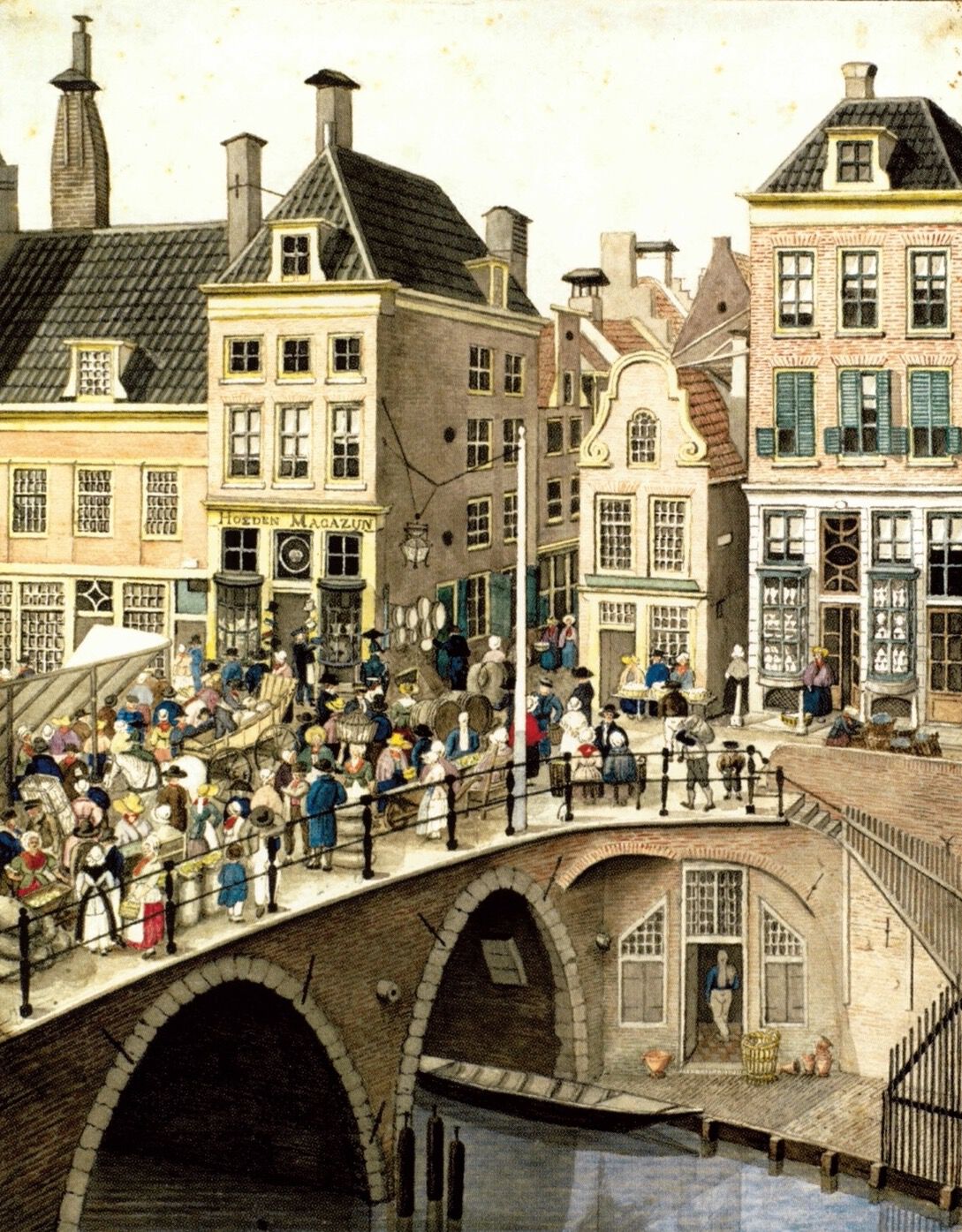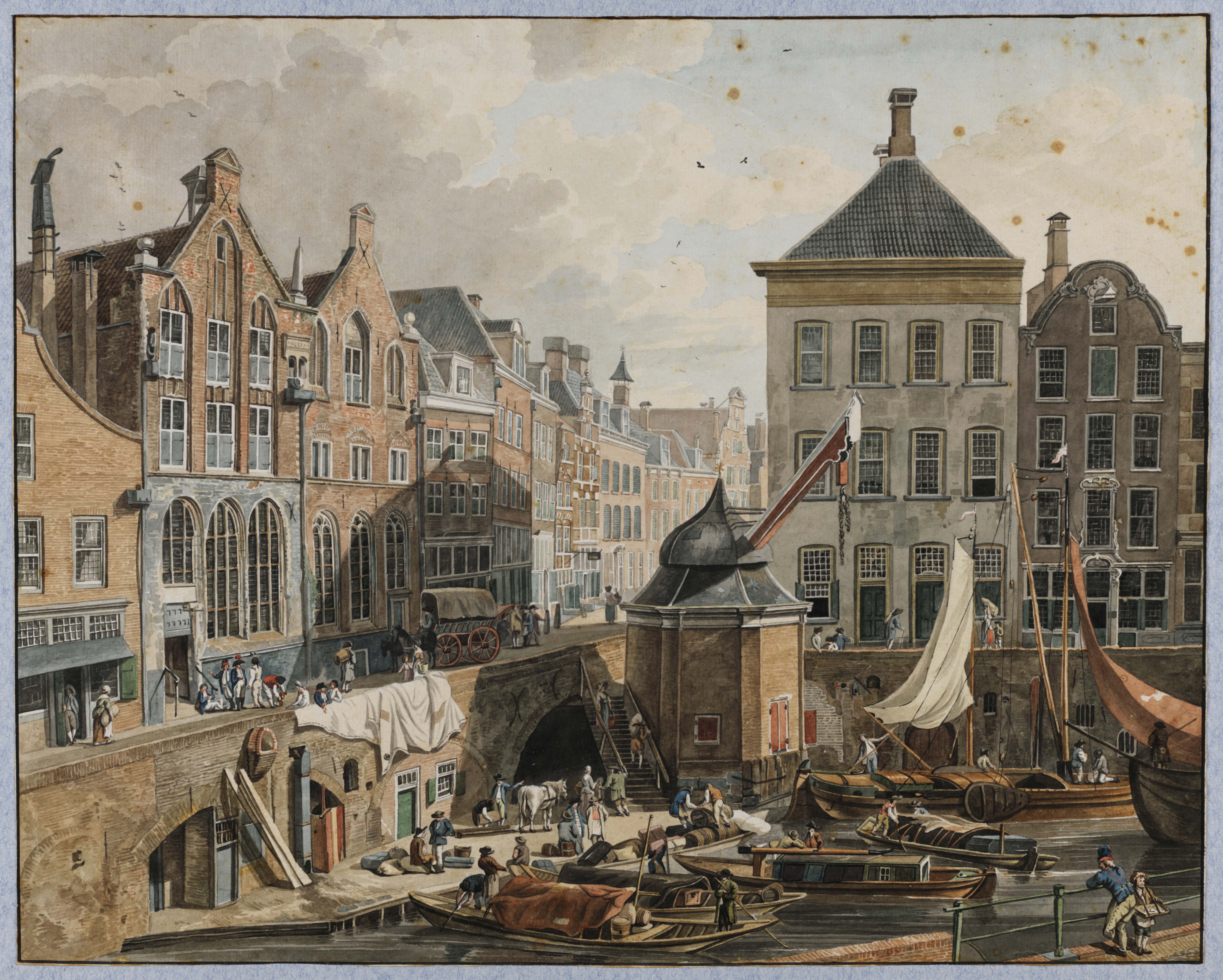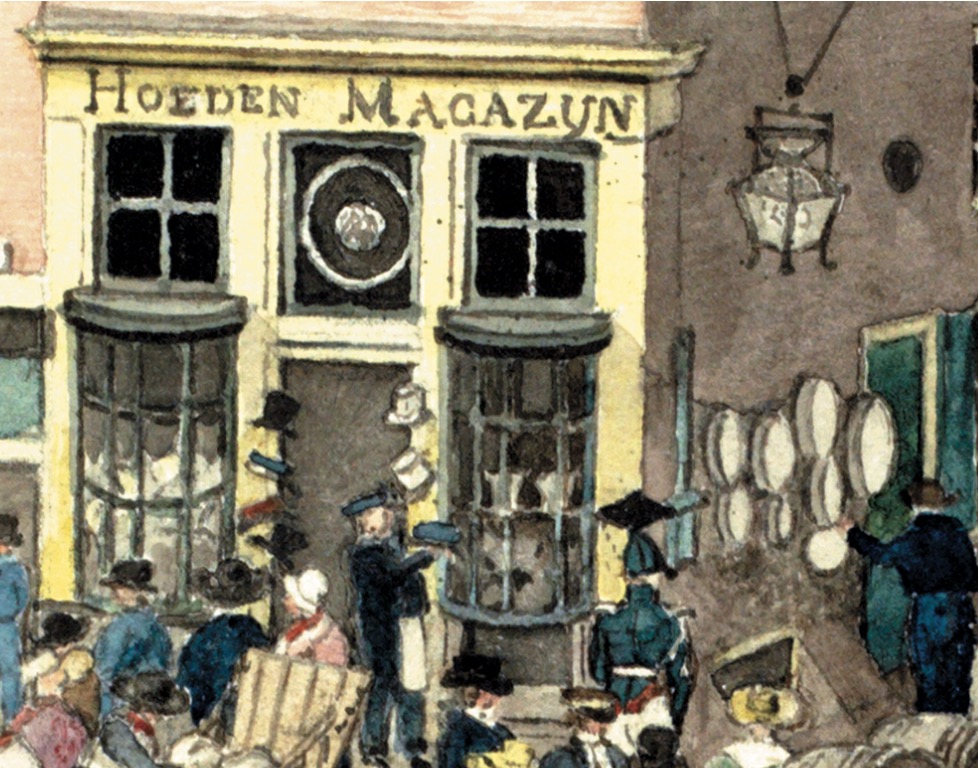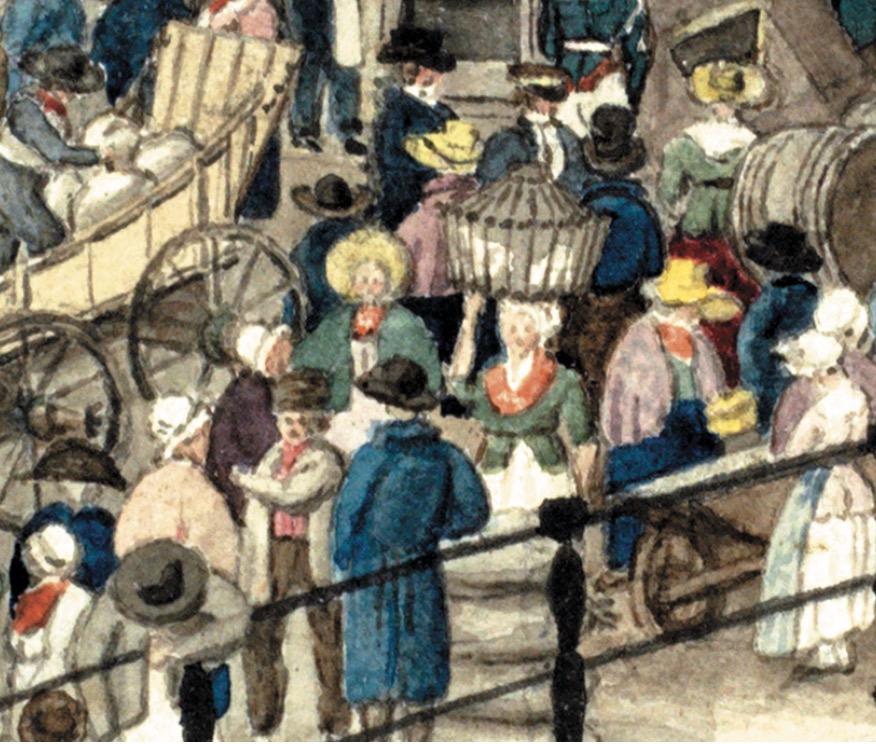Bakkerbrug
De zuivelmarkt op de Bakkerbrug
Bakkerbrug
De zuivelmarkt op de Bakkerbrug
De zuivelmarkt zien zoals die omstreeks 1820 op de Bakkerbrug werd gehouden. Deze brug was niet de enige plaats in de stad waar boter, kaas en eieren werden verkocht. Ook op de Smeebrug en de Mariaplaats gebeurde dat maar op de Mariaplaats moest men een kraam huren terwijl de Bakkerbrug gratis was.
De tekening laat zien dat aan de linkerkant van de brug een groot scherm staat opgesteld. Dat moest de zuivelmarkt beschermen tegen regen en wind en de zomerzon. Zo te zien werden er ook andere producten verhandeld. De boeren en tuinders van buiten verkochten er ook groente en fruit. En in het midden staat een vrouw met een mand kippen op haar hoofd. De gevels die de grachtenwand links vormen zijn van de huizen Groot en Klein Schorrenburg. In de negentiende eeuw zijn die huizen achter één grote gevel verdwenen. Het linkerhuis maakt nu deel uit van de Hema. Het lieflijke huisje met de klokgevel op de hoek van de Bakkerstraat en de ernaast gelegen Hamsteeg is nagenoeg gelijk gebleven. De huizen hebben verschillende vensters: ramen met kleine ruiten en grote schuiframen. Die achttiende-eeuwse ramen met kleine ruiten begonnen in het begin van de negentiende eeuw ouderwets te worden. In deze tijd werd het mogelijk grote glasplaten te gieten en zo verschenen er steeds meer schuifvensters met grote ruiten in het stadsbeeld. Ook zijn er twee panden te zien die etalages hebben. Daar zijn de vensters in de onderpui naar buiten uitgebouwd tot een erker om er de koopwaar in te kunnen uitstallen.
Boven de straat hangt een straatlantaarn, begin negentiende eeuw een nieuw verschijnsel in de stad. De lantaarn moest met een touw naar beneden gelaten worden om door de lantaarnopsteker aangestoken te worden. Elektriciteit en gasverlichting bestonden nog niet. Er zal een olielamp in de kap hebben gezeten. Pas in 1842 kreeg de stad Utrecht straatverlichting op gas.
De Bakkerbrug is afgezet met een ijzeren balie, de gracht door een muurtje zoals rechts op de afbeelding is te zien. Daar leidt een trap naar de werf. Dat gedeelte van de werf hoort bij het woonhuis erboven en is dan ook met een hek afgescheiden van dat van de buurman. In de deuropening van de kelder loopt een man naar binnen. Dat is een zakkendrager met op zijn hoofd een witte kap zoals vijftig jaar geleden de kolenboeren en vleesvervoerders die ook nog droegen. In het water ligt een boot. Het vervoer van handelswaar ging tot ver in de negentiende eeuw vooral over het water.
Een zuivelmarkt in de open lucht is niet ideaal. Daarom bouwde de gemeente in 1864 aan de Mariaplaats de Boterhal. Later werd dat gebouw de Handelsbeurs, nu is het bekend als Bison Bowling.






